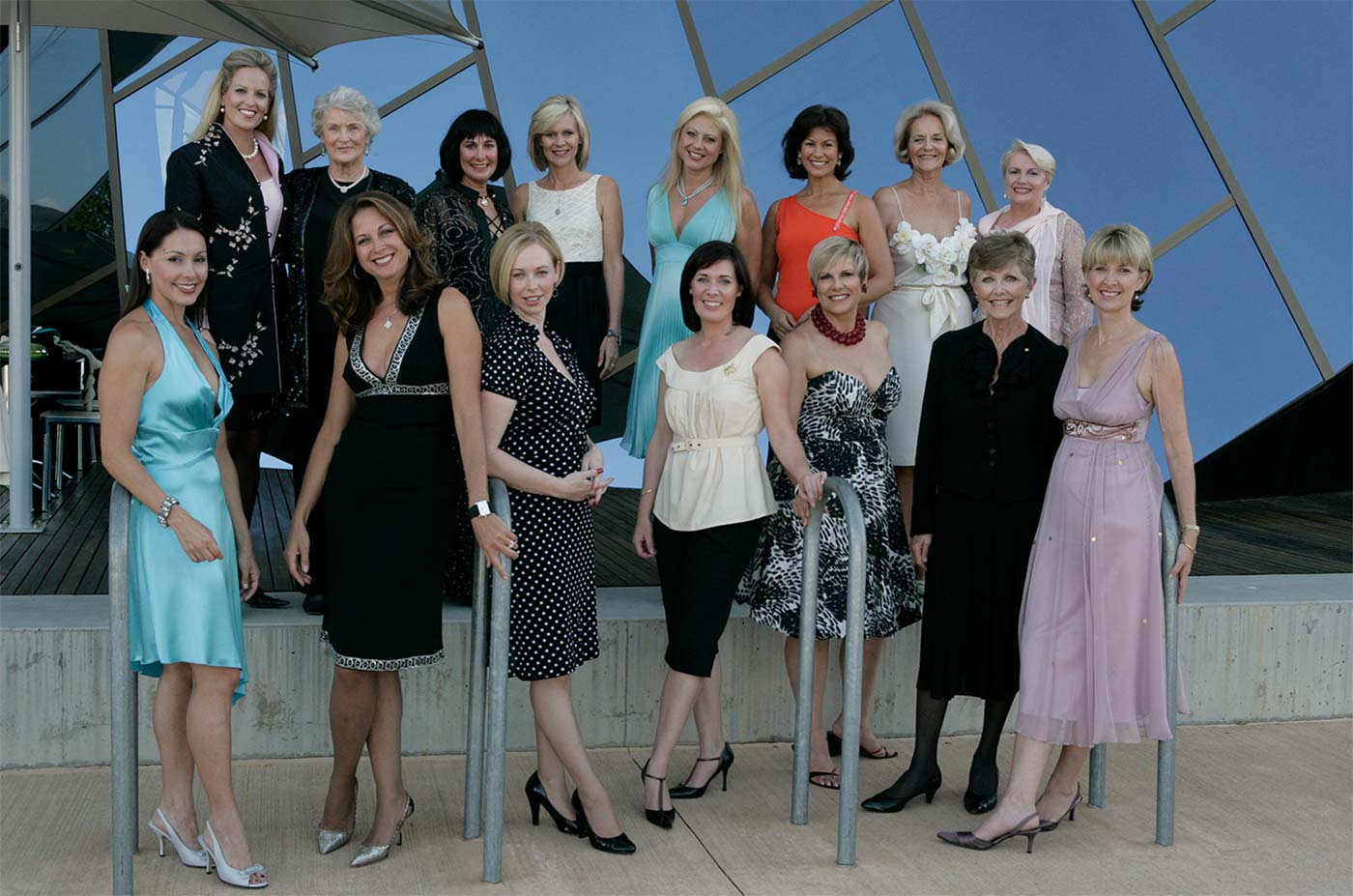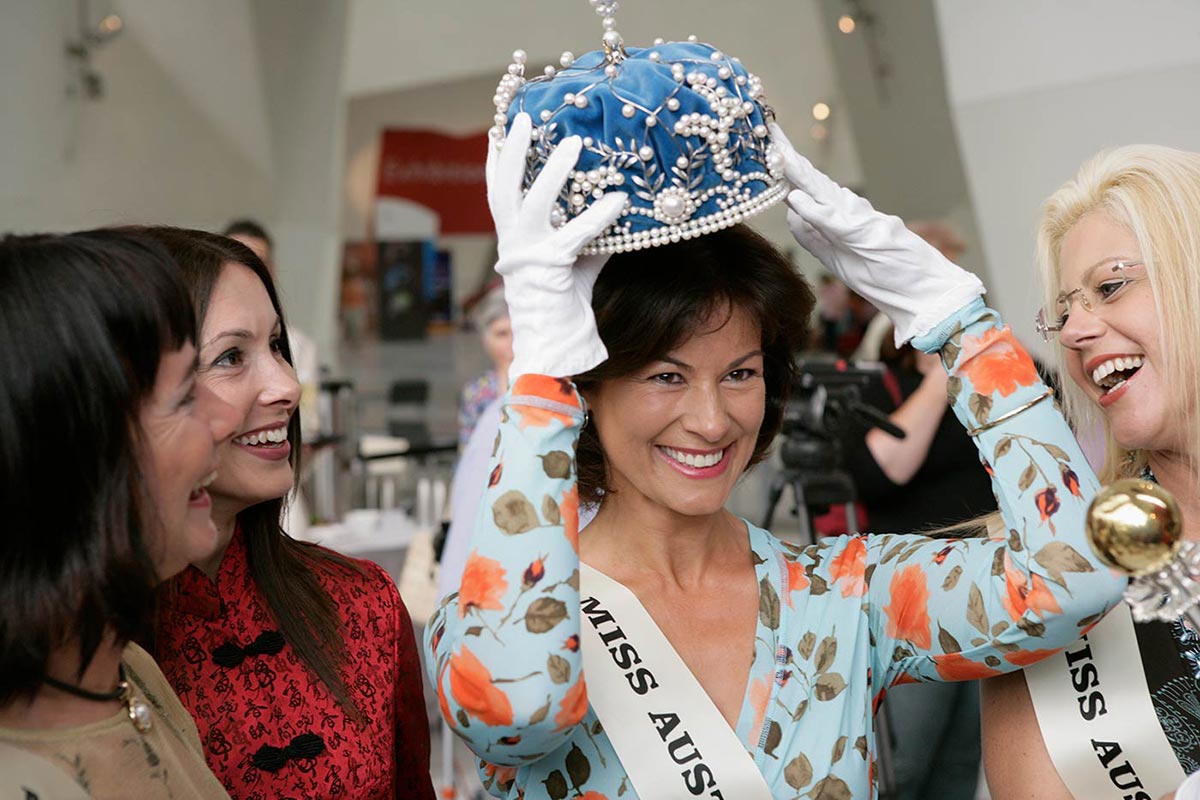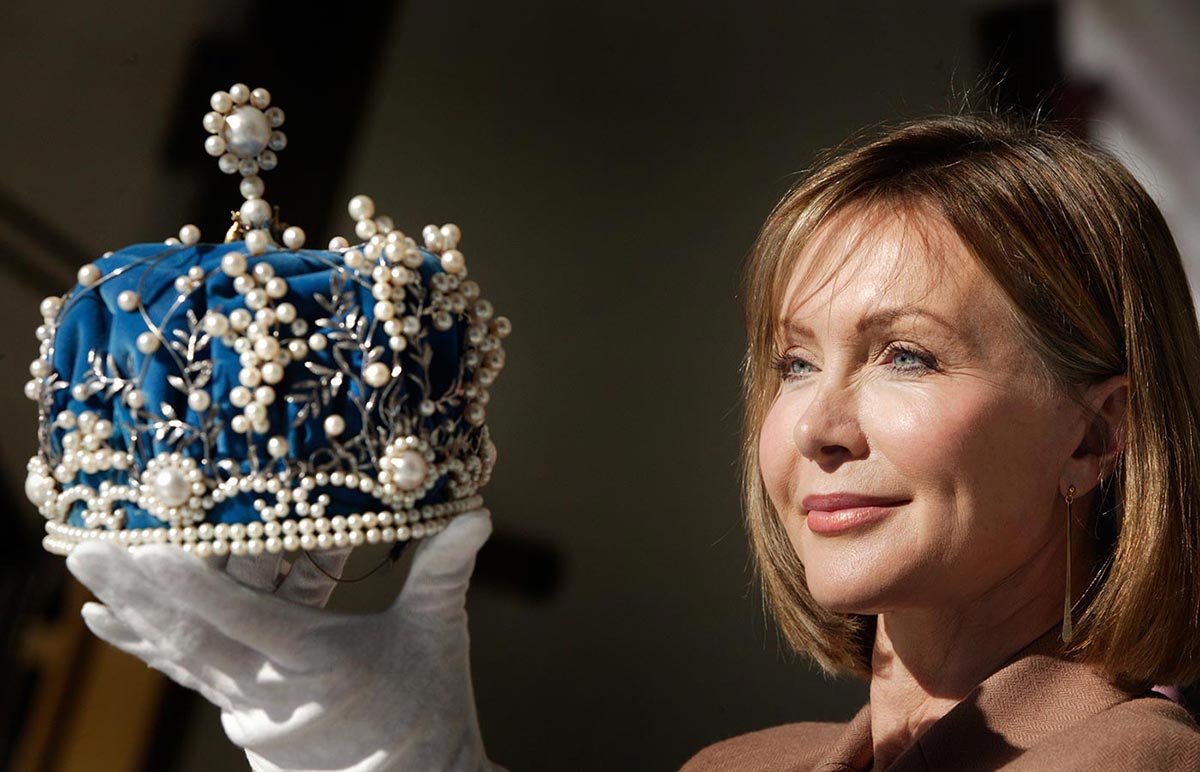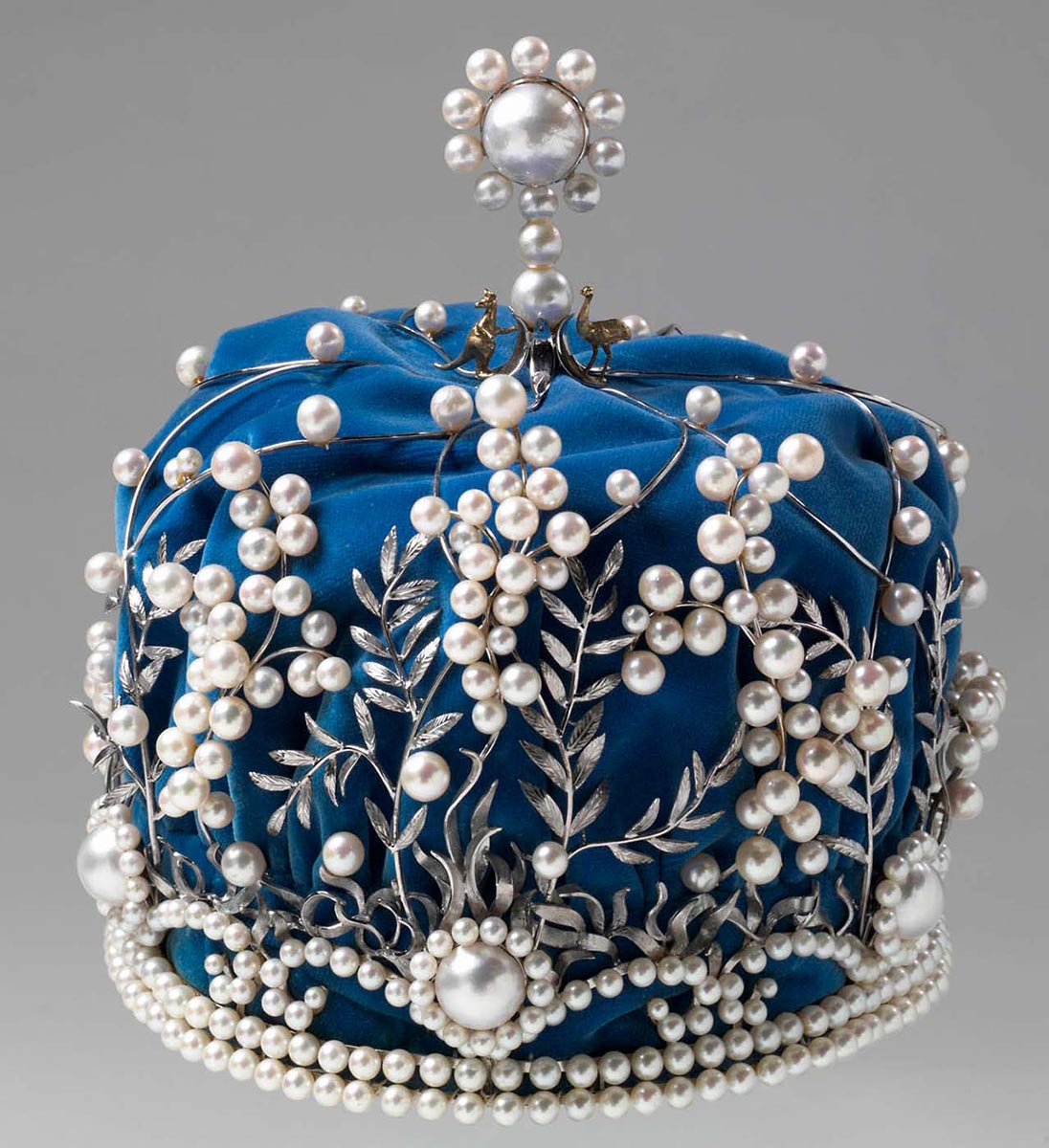The crown awarded to three decades of Miss Australia Quest winners is symbolic of a broader story about community values, disability services and the role of women in society.

The Miss Australia Quest, later known as the Miss Australia Awards, was one of the nation's longest-running and most successful charity events.
Museum senior curator Sophie Jensen said Miss Australia was at different times a beauty queen, an advocate for the disabled, a trade ambassador and a fundraiser.
'Across the years, Miss Australia was always representative of an "ideal" Australian woman and this changing notion of ideal womanhood reflects much broader changes in history and society,' Jensen said.
History of the Quest

Miss Australia evolved from early, intermittent competitions which sought beautiful and cultured women.
Its popularity peaked in the 1950s and 1960s, when the national awards were telecast and the winner was front page news.
The Quest raised more than $90 million for people with cerebral palsy from 1954 to its end in 2000.
The Quest ended due to a combination of challenges from feminist and lobby groups for the disabled, declining public interest and participation levels and the debate over whether men should take part.

Miss Australia crown
This crown was worn by titleholders from 1965 and 1991 and was hand-crafted in silver, blue velvet and more than 800 pearls.
The Miss Australia crown was presented to the Miss Australia Quest in 1965 by the proprietors of Toyomoto Australia Pty Ltd. It was designed by Melbourne artist Ernest Booth and was manufactured in Japan.
In the 1990s the Quest was modernised, discarding the traditional trappings of the beauty contest. The crown was last used in 1991. It came to the Museum as part of the Miss Australia Company collection.
Miss Australia 1973, Michelle Downes, was a guest at the crown handover in 2005 and spoke of the impact the Quest had on her life:
One of the greatest outcomes of the Miss Australia Quest was the public awareness of disability services and issues. The approach might have changed, but the real message of the Miss Australia Quest was never what we could 'teach' people with disability, but rather what they could teach us about humanity and understanding, challenge and achievement.
I think I can speak on behalf of all Miss Australia's when I say that I feel we all own just a tiny part of the Miss Australia crown. It was ours for just a moment and changed our lives in ways we never dreamed of.
I believe the crown is now where it belongs and will stand as a symbol of a time in our country's history when the needs and rights of people with disability were finally acknowledged and a young girl from any walk of life could dream of becoming a princess for just a moment.
The Museum also holds collections from national titleholders including Helen Cooper, Joan Stanbury, Tania Verstak, Bliss Ryan, Jan Taylor and Gay Walker.
The Museum developed a travelling exhibition, Miss Australia: A Nation's Quest, which toured nationally from 2006.
In our collection
